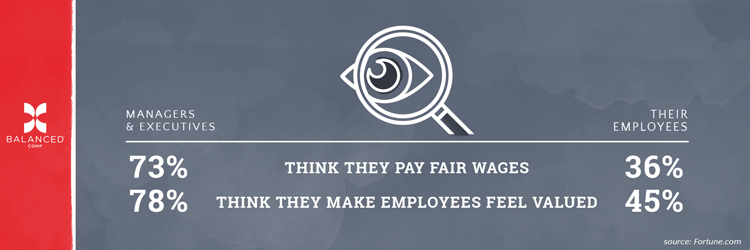By Christie Summervill

Modern managers have been almost guilt-tripped with the idea that they don’t give enough praise and recognition to employees. It is said to be the key to engaged employees who are highly productive even when their manager isn’t watching. It has proven to lead to more profitable companies. Employees join companies, but leave supervisors who don’t effectively manage engaged relationships, HR has assured us.
I don’t disagree with any of that, but woe to the supervisor who isn’t wary of its double-edged sword.
I have had several employees in my career who were obviously rising stars. No doubt they were all “my right hand.” We took them to lunch on their anniversary and birthday. They were given high-profile projects to stretch and showcase their talents that could potentially lead them to future promotions.
To coordinate this performance with their pay levels, they were paid at the midpoint of their salary range after only a couple of years in their position. It was easy for me to think I was getting everything right, a model manager, in terms of praise, recognition, and engagement with my employees.
The problem came to bear because, despite all of this, they still didn’t think they were compensated well enough for all the good I had espoused they brought the company. Since they were such outstanding performers, they thought the market might value them even more. I questioned whether my praise and recognition might even encourage them to look for higher pay elsewhere.
This isn’t unique to one company, industry, or even one executive, as these concerns exist for most of the workforce. In fact, there is a striking discrepancy between what an employee and a manager think is fair.

A study shared at Fortune earlier this year found that 73% of managers and executives think they pay fair wages; only 36% of their employees thought so. And 78% of managers and executive think they make employees feel valued; 45% of employees agreed.
The question I find myself asking is, do praise and recognition lead to hubris? Perhaps I don’t focus enough on the performance areas that need improvement in order to keep my team satisfied with me as a manager. If so, what now?
To address these issues, I tend to rely on the “engaged relationship” I share with my employees. We sit down together and I show them the numbers that determined their midpoint and where their pay level was compared to that market rate.
In the study, they found that more money isn’t necessarily the solution. That often, better communication about why people make what they make can have a stronger effect. A striking 82% of employees said they’d be “satisfied with below-market pay” if their employer could provide a convincing explanation for why.

This was an effective enough strategy, but does anyone ever believe they are paid enough? I definitely had to show them where the road to their high productivity could lead in terms of promotion. Having this compensation information at my fingertips saved the day, or at least helped us get through this rough spot.
Transparency about compensation is the only road to trust.
In the future, to avoid the cuts from the double-edged sword of praise and recognition, I need to balance that by adequately addressing where improvement is needed so employees aren’t lead to believe that they are all superheroes of the work place who deserve to be paid at the maximum of the range.
Back to Blog

